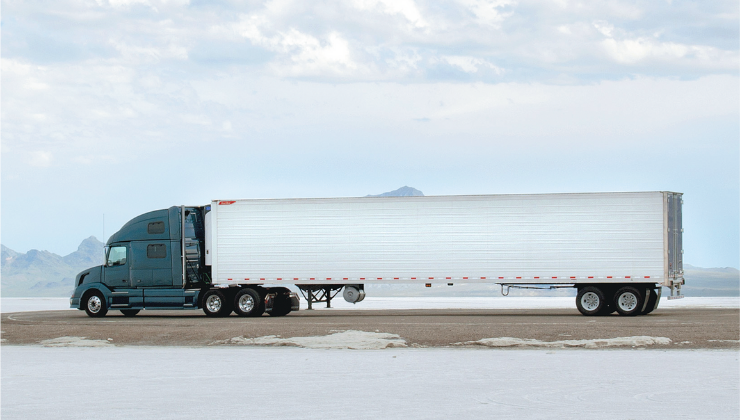In the trucking industry, you have to be ready for anything. Trucks are a necessity to keep the economy moving—no matter the time, place, or conditions.
That being said, even the well-oiled machine that is the modern fleet is no match for an act of nature. If your trucks run in the wintry mountains of the northern U.S., or the hurricane-afflicted Gulf Coast in late summer, or the Great Plains during tornado season, then you are well aware of the negative impacts these events can have on a fleet. And that’s to say nothing of the devastation on the region as a whole.
In the past, drivers were often left with no choice but to improvise their way through snowstorms, torrential downpours, or other acts of nature—something that still, of course, happens when a freak storm pops up out of nowhere.
However, provided you have some notice that a major snowstorm is on its way, today’s trucking industry has a way to combat these incidents: telematics. The tracking tools that are included in many telematics offerings bring an element of control to a situation that would ordinarily be uncontrollable.
Seeing the Big Picture with Trailer Telematics
“Visibility” has long been a buzzword in the industry, and for good reason—with visibility comes the knowledge not only of where all of your trucks are, but the circumstances around them. If one of them is headed for disaster, a well-timed call can help the driver reroute and avoid the worst of what’s coming. Making these kinds of decisions quickly is key—and is only possible if you have all the information at your fingertips.
This is why Great Dane developed FleetPulse, a telematics solution designed to offer increased visibility for fleets. FleetPulse collects data from a wide variety of sensors and sends it to a dashboard, viewable by your fleet dispatch. This data includes GPS tracking, so you can view the locations of your entire fleet. This real-time data, when combined with your knowledge of the trucks’ routes and upcoming weather patterns, gives you the information necessary to make reroutes—before a truck finds its way into any real danger.
Real-Time Telematics Data Empowers Better Decision-Making
“The real-time look at where trailers are, if they are loaded, if they are healthy, how many trailers are at certain locations, can all help shorten a response time after a disaster,” says Chris Hoyt, FleetPulse Product Manager at Great Dane.
This zoomed-out look can also help fleet managers restructure their logistics after the disaster and find the best way possible to keep things moving. For instance, it will likely prove helpful in the event that your trucks have to provide goods to an area that recently experienced a natural disaster of some kind. Visibility of the entire map, including which roads are closed or which areas might be inaccessible or overcrowded, will help the driver make the best use of their time, provide goods quickly to an area that needs them, and return speedily to collect the next load.
It’s also worth noting that FleetPulse’s sensors track open doors and cargo weight, which can help you circumvent another kind of disaster: cargo theft.
The Value of Predictive Trailer Maintenance
While visibility is an important step in avoiding a potential disaster, proper trailer maintenance is another. There are many reasons to keep your trucks and trailers up to date on their maintenance and upkeep, not the least of which is so that when the worst happens, it’s not compounded by equipment failure. Keeping up on preventative maintenance and sticking to manufacturer-recommended service schedules can minimize the chance of something going wrong at the worst possible time.
“Keeping a trailer maintained properly will ensure it is as safe as possible when out on the road and in strong weather,” Hoyt adds. “Making sure the brakes, tires, and lights are functioning as expected and have been maintained proactively will ensure that you’ve got trailers on the road running properly. If you have a trailer with an ABS issue or a light out, that could be even more of an issue in bad weather.”
FleetPulse can help with predictive maintenance by closely monitoring the actual usage of trailer components, giving you more detailed information on when they might need maintenance or replacement. Manufacturer recommendations are still your best baseline for trailer maintenance, but the more precise measurements supplied by FleetPulse’s sensors can alert you if a trailer is being used frequently enough that it requires an accelerated service schedule.
Learn more about our trailer telematics solution.



